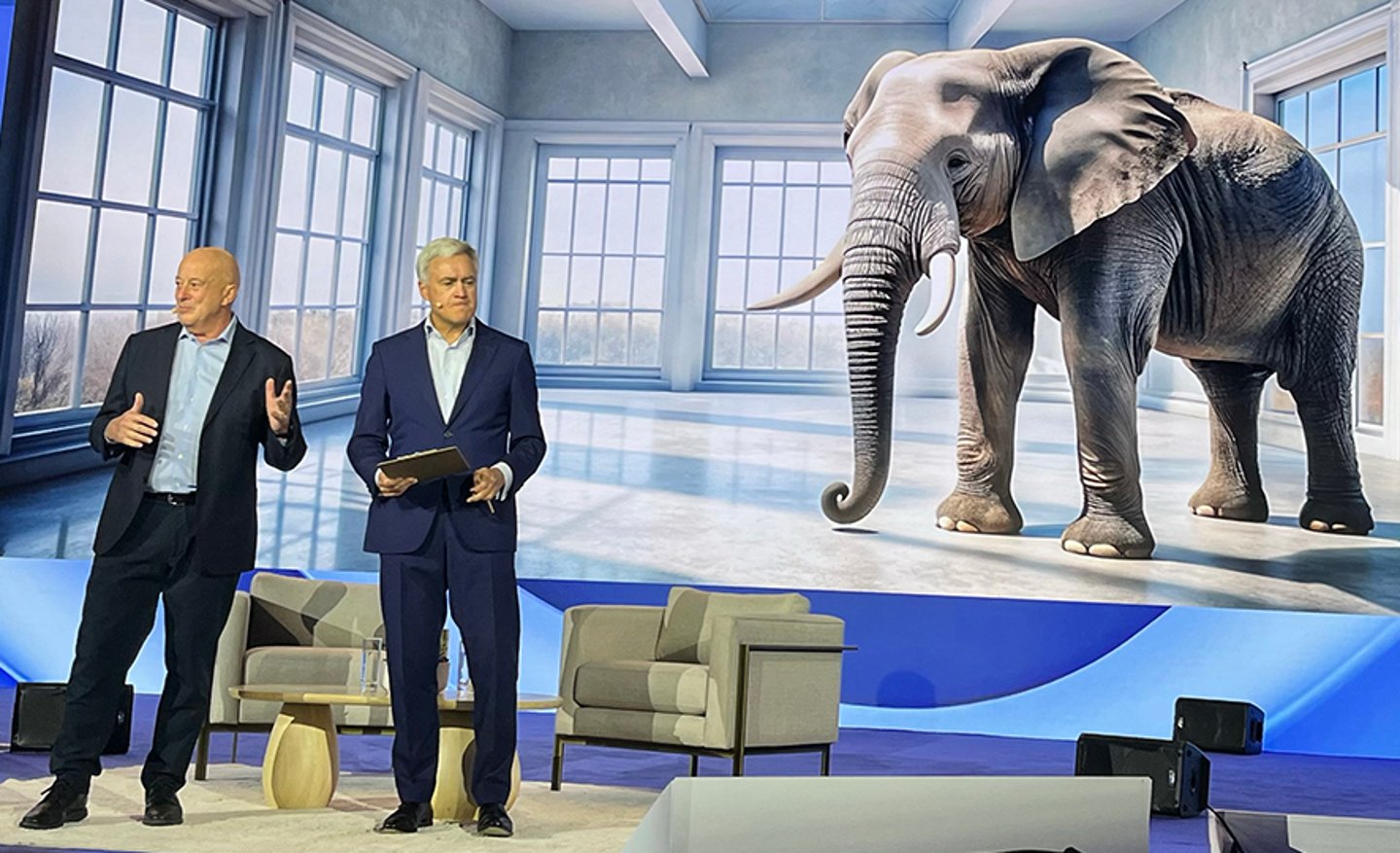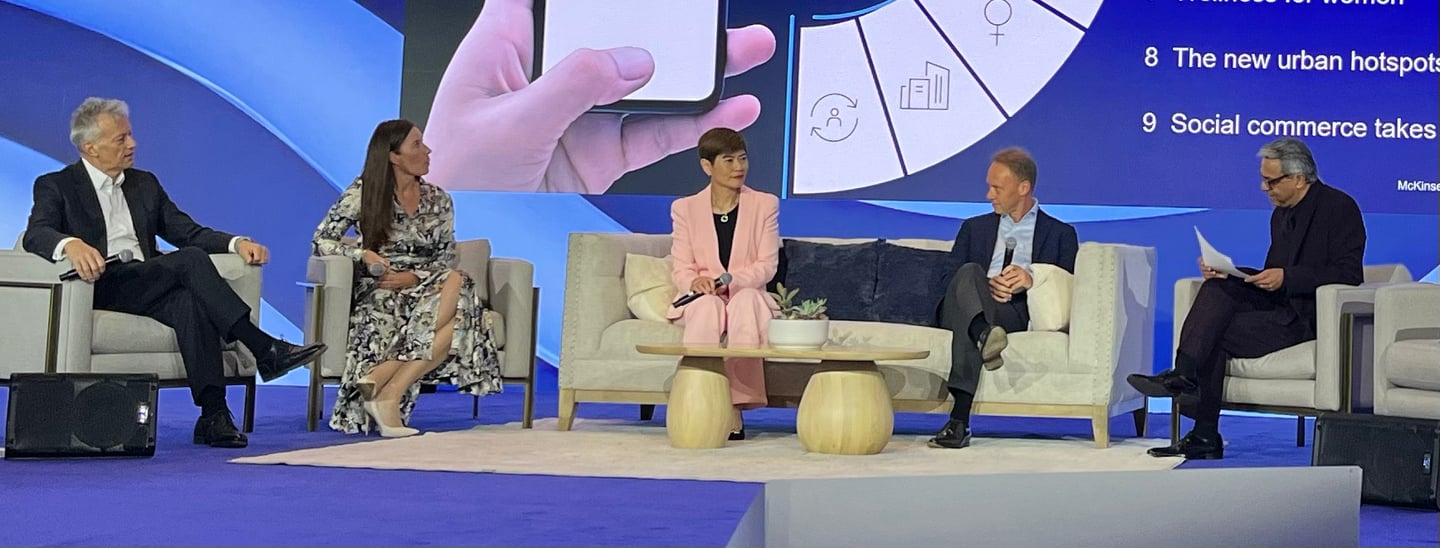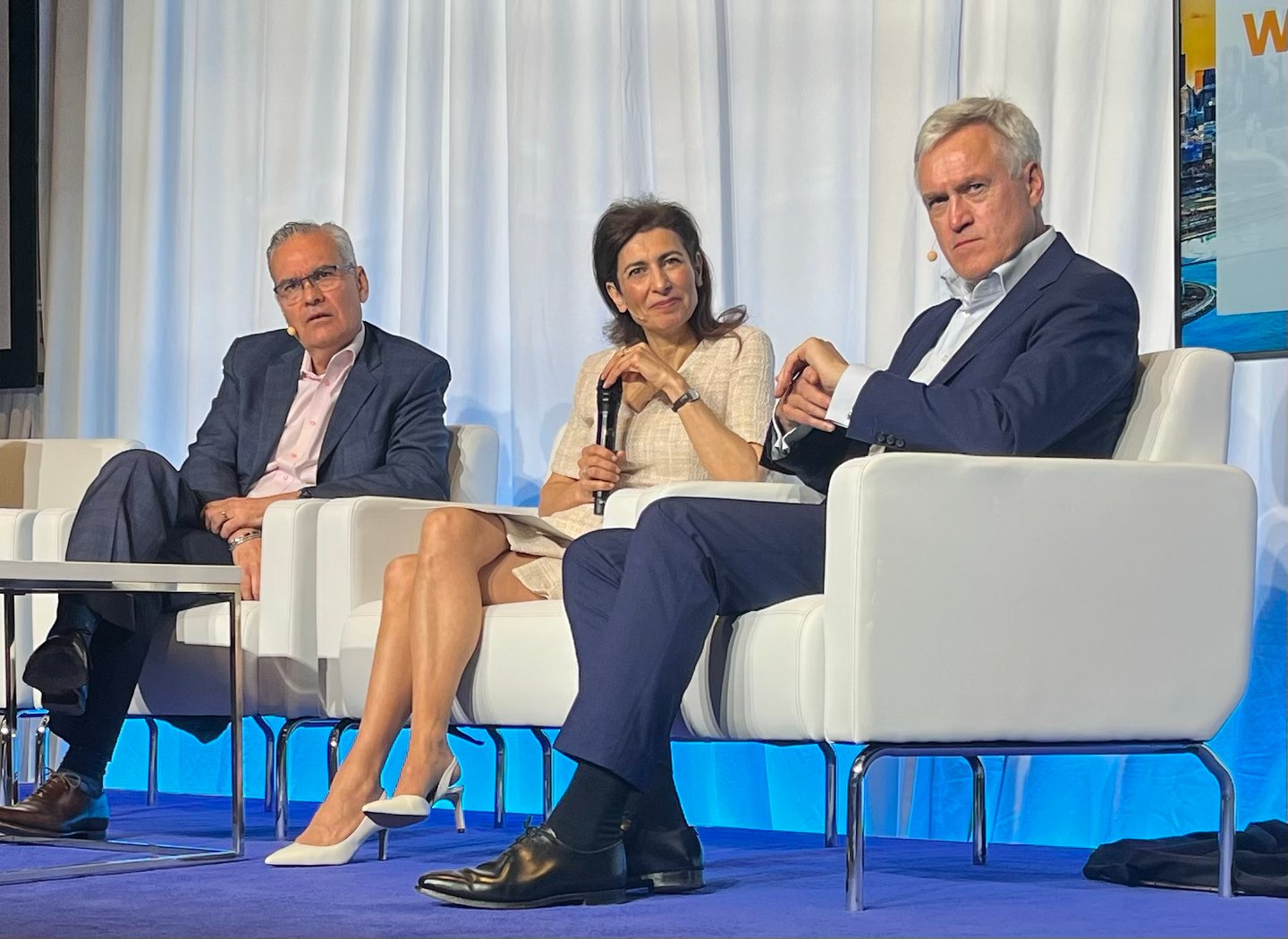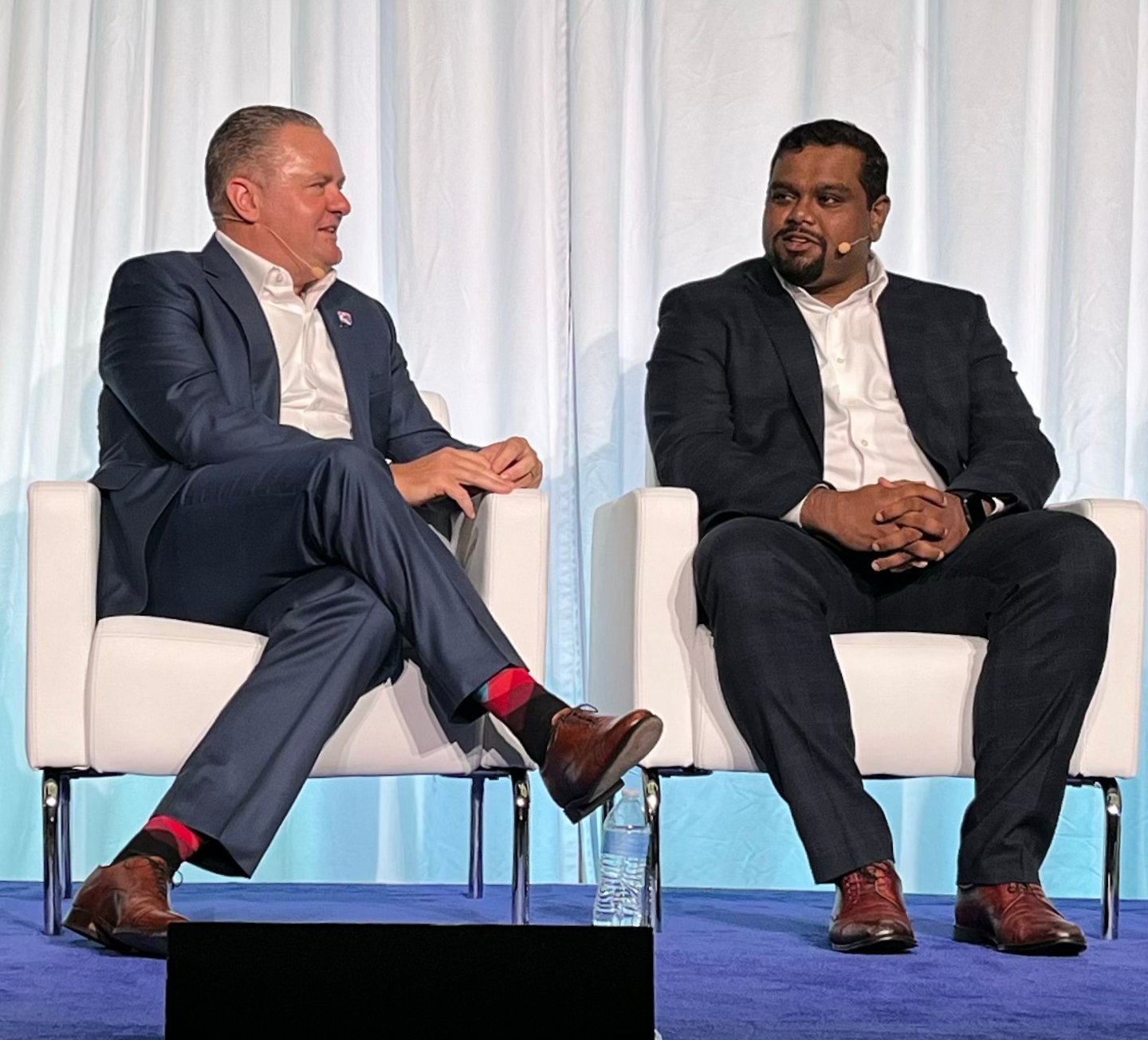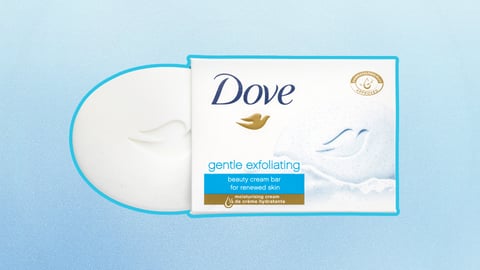Consumer Goods Forum Global Summit 2024: Takeaways & Action Items
“It’s not easy” may be the best encapsulation of last week’s Consumer Goods Forum Global Summit.
Over a thousand members of the CPG industry convened in Chicago — not to commiserate but rather collaborate, as execs challenged one another to be better stewards of the planet and their consumers.
With senior leaders from many of the largest manufacturers and retailers — including Coca-Cola, PepsiCo, Unilever, Danone, Kraft Heinz, Walmart, Mars, Ahold Delhaize, and Haleon — the general sentiment was a need to better marry revenue and responsibility. As tends to happen when you gather C-suites on a stage, there were persistent calls for more transparency, innovation, leadership, and accountability.
In short, it’s up to you: Step up.
Pressure Theme: Sustainability
More CPGs are acknowledging that it will take longer than initially anticipated to progress upon their sustainability goals — and that even though consumers demand greener products, they’re unlikely to pay more right now.
There are significant obstacles, and several executives took to the stage to urge resilience and leadership in the face of these challenges. With the right partnerships, organizations may face short-term costs but long-term benefits, stressed PepsiCo CEO Ramon Laguarta.
“I want to challenge the perception that sustainability is more expensive,” he said, citing an example in which PepsiCo partnered with Walmart in pursuit of healthier farming practices “Sustainability could be an opportunity to transform our companies to make them more sustainable and, at the same time, more profitable — two things we’re supposed to do.”
Some companies are finding success with M&A of smaller, more sustainable companies, which also helps them tell a better story, Jim Eckles, managing partner of the Cambridge Group, told CGT.
“It's hard to change your existing business model. If you make products in plastic bottles, and those plastic bottles fit nicely on the retail shelves, it's going to be awfully hard for you to stop making those products in plastic bottles. You could buy a company that makes something in a more sustainable package. … But it's slow going.”
Bottom line: Much of the conflict is playing out within the increased sustainability reporting mandates. There is the perennial conflict between old and new processes and technologies, said Ruediger Hagedorn, director of end-to-end value chain at the CGF, as leaders grapple with moving from the reliable legacy processes currently producing sustainability analysis to new tools that can provide more efficiency and automate data capture — but require investment and trust.
“You're kind of forced to run two things in parallel. So you have to invest in new tech and run both in parallel, to gain confidence and convince people.”
Pressure Theme: Private Label
You can talk about luxury retail, but consumers are up to 10 times more willing to trade down vs. trade up, noted Sajal Kohli, senior partner at McKinsey & Company. What’s more, the rise in dupe culture means that trading down has been embraced by many cost-conscious consumers.
Walmart International president/CO Kathryn McLay pointed to the retailer’s recently launched Bettergoods line, of which 70% of items are less than $5. “The intent is we try to fill gaps that are in the market — that we give our customers the ability to build a basket that allows them to stay in the budget they’ve got, [so they] have a mix of brands and fill gaps with private brands.”
Bottom line: Manufacturers are right to be worried, per Jim Doucette, consumer and retail sector leader at EY-Parthenon. “If you track over the last 30 years, any time there's been an economic disruption from a consumer standpoint, private label share increases and it stays there. It doesn’t come back. … That’s the risk for branded manufacturers, where if you don't get the pricing right in that price delta versus the private label products in your category, you could lose your consumer forever.”
Despite this, some leaders insisted all of this is just par for the course within a perennial cutthroat market.
“Brands are brands, whether it’s the name on the retail outlet [or] it’s owned by the retailer,” said James Quincey, CEO of The Coca-Cola Company. “Each brand, whoever is the owner, is seeking a niche in the marketplace, and it's a competitive marketplace. I don’t see it as there’s a difference between all these brands. They’re all looking for differentiating positions in the marketplace. If they find one, they do well, and if they don't, [they fail]. It’s as brutally simple as that.”
Pressure/Opportunity Theme: Healthier Living
The pandemic not only pushed consumers to think more about their health, but the increase in GLP-1 medication use and ongoing pressure on healthcare systems are all impacting the consumer goods landscape. As a result, both manufacturers and retailers are taking harder looks at the products they offer to lower-income consumers, how they’re meeting the needs of an emerging consumer segment, and the role of mental health.
Unilever CEO Hein Schumacher pointed to the opportunity in the growing segment of aging consumers, noting that only 4% of advertising features people 65 years and older. The company had recent success leaning into these segments with both Dove and Magnum campaigns. “Wellness is also offering really good products for that generation.”
“Unfortunately, for a lot of people, the whole health topic and nutrition is not completely clear. I think the way we educate, the way we talk about it, the way we label our products is super important and to give the information so that people can make those choices,” said Frans Muller, president/CEO of Ahold Delhaize.
More than half of shoppers don’t believe claims on labels and there’s the price perception that healthier products are expensive — a myth that needs to be cut, said Ayla Ziz, Danone chief customer officer, SVP commercial Europe. “We owe our consumers transparency about what we’re eating. It’s an industry challenge.”
Collaboration with retailers will be critical in order to increase both education and access to healthier products. “How do we really partner with retailers because that increases the access because that’s where the shoppers are every day,” said Brian McNamara, Haleon CEO. As an example, 70% of Ahold’s sales come through loyalty programs, providing significant digital and data opportunities to personalize offerings and provide healthier and more sustainable opportunities.
On the horizon: With GLP-1, Doucette said recent EY research indicates the impact of GLP-1 medications will be stark, with consumers taking the medications moving from eating 3.5 snacks a day down to 2.1. “Depending on the adoption curve, it could have a very significant impact on consumers.”
Opportunity/Pressure Theme: Artificial Intelligence
While regular CGT readers may be well-versed in the rapid ascent of generative AI, the overall sentiment surrounding AI at the Summit was a call for more education and urging initial steps toward action. Justin Honman, head, worldwide retail and consumer goods go-to-market at AWS, noted that it was the first time in many years that technology has taken a bigger and broader seat at the consumer goods table.
The increase of generative AI is creating some tension within CPG as it improves and organizations determine how to adapt. Honaman pointed to the quickly evolving use cases of marketing creative: “It will only get better, and the tension that will play out is how you, as brands, take the images and use or not use them. Do you tell consumers you’re using them or not? How it will change the marketing and branding part of your business is significant.”
Mars has implemented training programs for all levels of the organization, from senior executives to associates, shared Deepak Jose, global senior director and head of one demand data and analytics solutions.
“When it comes to attracting and retaining talent, that’s going to be a game-changer,” he warned. “Large brands, like it or not, do six months of alignment to do six weeks of work. If you have to attract talent and they’re really smart, you need to create an environment to drive innovation and move at speed — and connect their purpose to the purpose of the company as well.”
And while having your data in order is critical to properly leverage AI, waiting for perfection is not the answer.
“I don't get frustrated with the lack of data quality,” shared 84.51˚’s chief data and technology officer Todd James. “I tell my teams that we're going to go into that area and solve — the idea being if this isn't the area that has the data laid out the way we want it, we've got to create the data. We've got to enrich it, and just bake that into the project. What we're able to do by taking that approach, rather than waiting on perfect, you're fixing the data as you deliver value.”
Bottom line: “If we wait for the perfect data for AI, we’ll never do AI,” Jose echoed. “The data space is evolving quite a bit. … Through retail media partnerships, we can get data from our retail partners, and that data is going to enrich brands' ability to do personalization. It is important to build a connected data foundation.”


